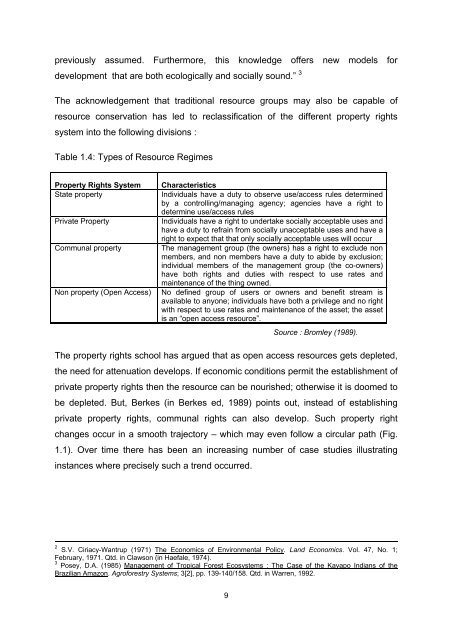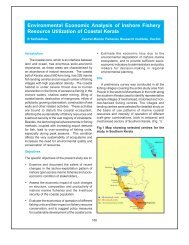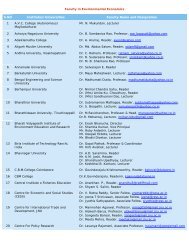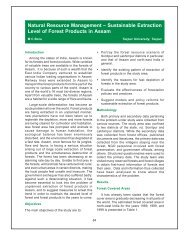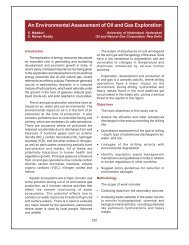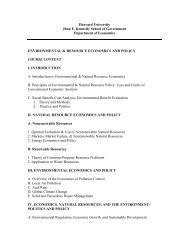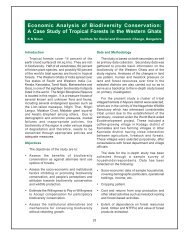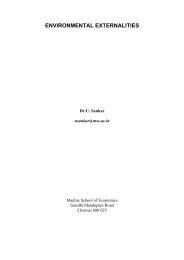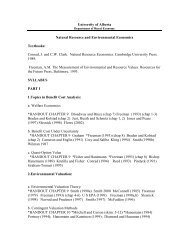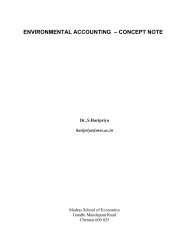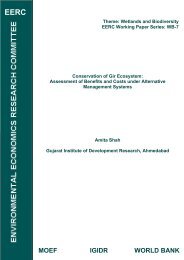PDF 3.08 MB
PDF 3.08 MB
PDF 3.08 MB
You also want an ePaper? Increase the reach of your titles
YUMPU automatically turns print PDFs into web optimized ePapers that Google loves.
previously assumed. Furthermore, this knowledge offers new models for<br />
development that are both ecologically and socially sound.” 3<br />
The acknowledgement that traditional resource groups may also be capable of<br />
resource conservation has led to reclassification of the different property rights<br />
system into the following divisions :<br />
Table 1.4: Types of Resource Regimes<br />
Property Rights System Characteristics<br />
State property Individuals have a duty to observe use/access rules determined<br />
by a controlling/managing agency; agencies have a right to<br />
determine use/access rules<br />
Private Property Individuals have a right to undertake socially acceptable uses and<br />
have a duty to refrain from socially unacceptable uses and have a<br />
right to expect that that only socially acceptable uses will occur<br />
Communal property The management group (the owners) has a right to exclude non<br />
members, and non members have a duty to abide by exclusion;<br />
individual members of the management group (the co-owners)<br />
have both rights and duties with respect to use rates and<br />
maintenance of the thing owned.<br />
Non property (Open Access) No defined group of users or owners and benefit stream is<br />
available to anyone; individuals have both a privilege and no right<br />
with respect to use rates and maintenance of the asset; the asset<br />
is an “open access resource”.<br />
Source : Bromley (1989).<br />
The property rights school has argued that as open access resources gets depleted,<br />
the need for attenuation develops. If economic conditions permit the establishment of<br />
private property rights then the resource can be nourished; otherwise it is doomed to<br />
be depleted. But, Berkes (in Berkes ed, 1989) points out, instead of establishing<br />
private property rights, communal rights can also develop. Such property right<br />
changes occur in a smooth trajectory – which may even follow a circular path (Fig.<br />
1.1). Over time there has been an increasing number of case studies illustrating<br />
instances where precisely such a trend occurred.<br />
2 S.V. Ciriacy-Wantrup (1971) The Economics of Environmental Policy. Land Economics. Vol. 47, No. 1;<br />
February, 1971. Qtd. in Clawson (in Haefale, 1974).<br />
3 Posey, D.A. (1985) Management of Tropical Forest Ecosystems : The Case of the Kayapo Indians of the<br />
Brazilian Amazon. Agroforestry Systems; 3[2], pp. 139-140/158. Qtd. in Warren, 1992.<br />
9


